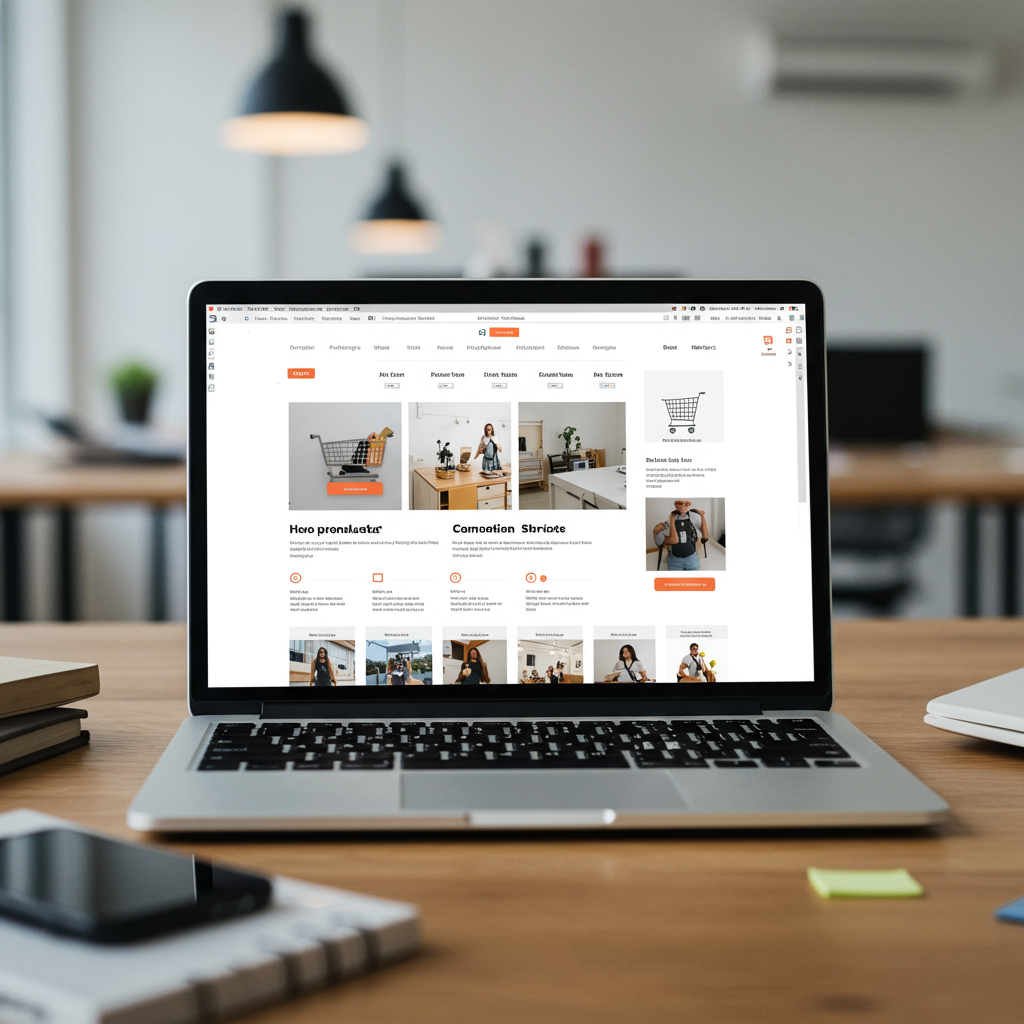Discover how to transform your Shopify store’s first impression into a powerful conversion engine with these forward-thinking design strategies.
As a Shopify merchant, you know your online store’s homepage is more than just a digital storefront; it’s your brand’s first impression, your virtual handshake with potential customers.
In the rapidly evolving e-commerce landscape, staying ahead means constantly refining your approach, especially as we look towards 2025.
The design choices you make today for your Shopify homepage will significantly impact your conversion rates, customer engagement, and ultimately, your bottom line tomorrow.
I’ve spent countless hours analyzing trends and best practices, and I’m excited to share my insights on how to craft a compelling and high-performing Shopify homepage for the year 2025.
My goal is to equip you with actionable tips that will not only make your store look fantastic but also function as a powerful sales engine.
One of the biggest shifts we anticipate is the deeper integration of AI-driven personalization. Your homepage should dynamically adapt to individual visitor behavior.
This means showcasing products they’ve viewed, recommending related items, or even tailoring promotional banners based on their browsing history and demographics.
Leveraging Shopify apps that offer AI-powered recommendations will be crucial for creating a truly unique and engaging experience for every visitor.
Static images are becoming a thing of the past. Customers in 2025 will expect more immersive ways to interact with products.
Consider integrating 3D models, augmented reality (AR) previews (especially for fashion, furniture, or home goods), and high-quality product videos directly on your homepage.
A captivating hero video showcasing your brand story or product in action can instantly grab attention and convey value far more effectively than text alone.
Consumers are increasingly conscious of a brand’s values. Your homepage is the perfect place to subtly highlight your commitment to sustainability, ethical sourcing, or community involvement.
This could be through a dedicated section, a small badge, or even integrated into your product descriptions. Authenticity here is key.
This isn’t new, but its importance will only intensify. A significant portion of your traffic will come from mobile devices, so your homepage *must* be flawlessly responsive and incredibly fast.
Google’s Core Web Vitals will continue to be a critical ranking factor, meaning slow loading times will not only frustrate users but also penalize your search visibility.
I recommend regularly testing your site speed using tools like Google PageSpeed Insights and optimizing images, scripts, and themes to ensure a lightning-fast experience.
The hero section is your prime real estate. It needs a clear, compelling message, a strong visual (image or video), and a prominent call-to-action (CTA) that guides visitors to your main offering.
Think about what problem you solve or what unique value you offer, and communicate it instantly.
An intuitive and easily accessible navigation menu is non-negotiable. Visitors should be able to find what they’re looking for within seconds, whether it’s product categories, ‘About Us,’ or contact information.
Showcase your best-sellers, new arrivals, or seasonal collections prominently. Use high-quality imagery and concise descriptions to entice clicks.
Build trust by displaying customer testimonials, reviews, star ratings, or even user-generated content. People trust what other people say more than what a brand says about itself.
Every section of your homepage should have a purpose, and often that purpose culminates in a clear CTA. Use action-oriented language like ‘Shop Now,’ ‘Learn More,’ or ‘Discover Our Collection.’
If you have a blog, feature recent articles on your homepage. This not only provides fresh content but also positions you as an authority in your niche and can improve SEO.
Make it easy for customers to find support. Include links to FAQs, contact pages, and clearly display trust badges (e.g., secure payment, money-back guarantee).
Beyond aesthetics, your homepage must be a joy to use. This means intuitive layouts, consistent branding, and minimal friction in the user journey.
Consider accessibility for all users, including those with disabilities. Ensure good color contrast, readable fonts, and proper alt-text for images.
A well-designed user experience translates directly into higher engagement and lower bounce rates.
The e-commerce world is dynamic. Your homepage design shouldn’t be a one-and-done project.
Regularly analyze your homepage’s performance using Shopify Analytics and Google Analytics. Look at bounce rates, time on page, and conversion paths.
Embrace A/B testing. Experiment with different hero images, CTA button colors, or section layouts to see what resonates best with your audience.
Stay updated with Shopify’s new features and theme updates. They often introduce tools that can enhance your homepage’s functionality and appearance.
Remember, your homepage is a living, breathing entity that should evolve with your brand and your customers’ expectations.
By focusing on these key areas – personalization, immersive content, mobile optimization, and a user-centric design – you’ll be well on your way to creating a Shopify homepage that not only looks stunning but also drives significant growth for your business in 2025 and beyond.
It’s an exciting time to be an online merchant, and the opportunities for innovation are endless.
What do you think about this article? Do you have any specific challenges or successes with your Shopify homepage design that you’d like to share? I’d love to hear your thoughts.






